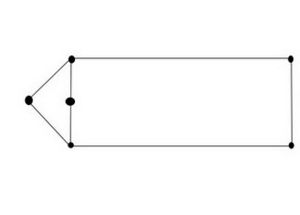Friggat
| Friggat | |
|---|---|

| |
| Designer: | Adam Nelson, Adam Skory, Simon Huntley, Ree Callahan |
| Year: | unknown |
| Players: | 4-6 |
| Stuff required: | A Foxtail or similar. Cones for marking boundaries. |
| Crew required: | None |
| Preparation: | Five minutes. |
| Time required: | An hour. |
| Place required: | An open, grassy area. |
| Activities: | Running, chasing, throwing, catching, new sport. |
| This is a playable game - it's finished, tested and ready to play. | |
| This game is made available under an Attribution-Noncommercial Creative Commons licence. (What does this mean?) | |
History and Influences
Friggat was created by Adam Nelson, Simon Huntley, Adam Skory, and Ree of Obscure Games Pgh, in the fall of 2009. It has been updated and improved by other members of Obscure Games Pgh since then. The game draws inspiration from baseball, Cricket, and Over the Line.
Equipment
One Foxtail, at least 6 cones for marking bases and boundaries.
Playing Space
An elongated house-shaped field, with the throwing team at the point of the triangle and the fielding team spread out through the rectangle. The tip of the triangle is home plate, and 20-30 feet directly forward from home plate stands another base in-line with the two corners where the rectangle and triangle meet. ~100 feet further are the other corners of the rectangular field. With 6 players, the end cones can be moved sideways, widening the playing field. This game can also be played on a softball field, using home plate and the pitchers mound as bases.
Number of Players
Two teams with 2-3 players per team.
Rules
When throwing, players attempt to throw the Foxtail past the line (the end of the triangular section) but within the boundaries of the field. Once a throw is made, the thrower runs back and fourth between the two bases (home base and the base directly in front of it) to score points. Fielders remain in the rectangular field until the Foxtail is caught or hits the ground. Fielders try to tag the runner or home base to get the runner out.
1. A Foxtail caught (by the tail) counts as one out and no points can be scored on that run.
2. A Foxtail that hits the ground and is then caught or picked up does not count as an out: the fielder must tag the runner or home base to get the runner out. Fielders must be in possession of the Foxtail to tag-out, but may not use the Foxtail to tag the runner.
3. A ball that goes outside of the boundaries, or does not cross the line, is a foul ball and counts as a strike. Two strikes equal one out.
4. A runner scores by running in a line between the bases. Out and back counts as two points, and one additional point is awarded for each base the runner touches after that.
5. If a runner is tagged by a fielder before completing his first out-and-back run, the runner is out and no points are scored. If the runner is tagged at any time after completing the first out-and-back run, the runner is out but retains the points already scored.
6. Once a fielder with the Foxtail enters the triangle area, no additional runs can be scored and the runner may choose not seek extra points. The next player is then “up to bat.”
7. Once the Foxtail has hit the ground, fielders may enter the triangle area and catch a Foxtail thrown by a team member, to attempt to tag a runner.
8. A Foxtail caught by the ball is an automatic 2 points for the throwing team, with no out.
9. A Foxtail thrown into a tree is an automatic out. And darn tricky to recover.
10. Three outs per team per inning.
House Rules and Variations
The idea we’ve been toying with is using multiple team members to run bases or interfere with fielder’s attempts to tag-out the runner. A runner, heading for home, can tag or pass an object (we used a baseball) to another member of his team, and then the fielder must try to tag this new player in order to get the out. Since there are no baselines, a runner can run anywhere within the triangle area created by “The Line” and home base. It turns what was a footrace to home into a game of tag within the boundaries, with players constantly